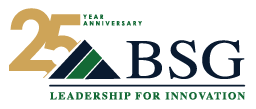
CEOs and executive leaders of innovation-stage companies often ask themselves what is the best approach to employee appreciation, productivity and retention.
We've all heard the stories around the lengths some venture capital-backed companies go in their efforts to service the needs of their employees. What started as the water cooler and drip coffee pot, fast-growth companies have super-sized, continuing to up the employee pampering ante-- installing company-paid cappuccino machines and Kurig coffee makers with what appears to be an endless supply and variety of coffees and teas. Keeping well-stocked office kitchen pantries with either favored junk food, healthy snack choices, or both. Catering lunch, breakfast, dinner, sometimes all three meals plus a midnight snack that rivals food options found on luxe cruise liners. Car valet services, onsite dry-cleaning pick-up/drop off, massages, yoga, concierge services, onsite daycare/nanny service, bring-your-pet-to-work options. And on and on and on, the calories and comfort food arms race continues its grim march toward caffeine OD and adult-onset diabetes.
However, there's a moral and dilemma CEOs often face when trying to strike the right balance of perks and austerity.
The argument for pampering: In the new knowledge-worker driven economy, there is often precious little machinery or automation. So every time an employee walks out the door to Starbucks, Dunkin' Donuts, the sandwich shop, or the drycleaner, the corporate engine slows down a notch. Therefore, the logic emerges that if you can remove all interruptions for employees, you'll get far more in productivity out of them than junk food and pampering you put in to them.
The argument against: It's expensive. It creates a sense of entitlement in employees. It creates a false sense of prosperity in a company that may be pre-revenue and in need of several more rounds of funding before it can stand on it's own two financial legs.
Some might say that economic recessions pound the potential for excess back to square one. OK, so perks have slowed down a bit after each economic set-back in the last decade, starting with the Internet bubble bursting and post-Y2K malaise, the aftermath of 9/11 on the U.S. economy and, most recently, the banking sector melt-down. However, after each setback it seems a new "floor" gets set that's just a bit tonier than the last one.
So how do CEOs handle this arms race in employee perks you ask?
Below are a few lessons learned and secrets shared by a number of CEOs who know a bit about the word "value" in serving up employee perks-
Perks Case Study A: Intra-office "micropreneurship." The secret of the concession license
One venture-backed CEO wanted to offer some of the perks, but not all when it came to stocking the pantry. So, rather than facing an all-or-nothing approach, the CEO decided that a business principle was in play that could be exploited in a win-win-win fashion-- what the company had as an asset was the equivalent of a monopoly. He reasoned that employees were a captive audience. If the CEO offered the "vendor concession" contract to an aspiring employee who wanted to make a few bucks, the company would offer exclusive stocking/inventory rights to that employee to stock the pantry. However, in trade, the employee had to agree to offer below-market pricing on food and beverages, and also manage the "SKU requests" that the employees would log from time to time regarding food selection and preferences. His formula in a nutshell looked like this:
- win for employees-as the got a below market food and beverage offering, the equivalent of a "company subsidized" pantry offering
- win for the "intra-preneur"-who was given the food concession to run, and could make a few extra bucks running the business
- win for the company-the company didn't have to provide all the food gratis, nor had the headache of fielding all the requests from employees
Perks Case Study B: Serving dinner not as an entitlement, but only to the truly meritorious
One venture-backed CEO faced the challenge of a sense of creeping entitlement around having dinner served every night at the company. It had become customary to provide engineering dinners to keep them on track and not leave the building. It cost money (VC investor's money) and the productivity gains were being questioned and balanced against real expense dollars.
What this CEO determined was that working hard in a start up was the price of admission for equity. 60 hours a week was expected. What would earn merit-pay in the form of dinner? They scheduled the meals for 9:30p for everyone in the company who was still there. This removed the stigma of an engineering only benefit. It also made sure that "real effort" was rewarded. And it sure ended up generating significant cost savings since the number of employee dinner was demonstrably lower as a result of the dinner hour shift from early to late evening.
Perks Case Study C: The allure of the "exotic"
One CEO had seen a swelling food and beverage budget over several quarters. Given that burn rate was still an issue, he decided he had to do something about it. But what to do? If he cut the corporate gourmet lifestyle, he might lose employees, or start to hear grumbling about how the company "used to be generous to its hard working staff, but now seems more interested in penny-pinching." So, he devised a plan to attract a high-end coffee shop into the building in which the company was housed. After landing a Starbucks down in the lobby, the food and beverage spend dropped precipitously, employees being lured away by what they perceived to be just a notch above what the company offered in its own pantry.
Perks Case Study Addendum (extra bonus points):
One CEO had determined that staying on plan or on schedule for technology companies is a chronic challenge. At some point he decided to reward achievement with a champagne toast. But it created a double-edged sword. Once they truly scoped out the development schedule and locked in the Gantt Chart, the CEO would write it on the champagne bottle and have everyone on the team sign it.
Then on the date the goal or project was to be achieved the CEO opened the champagne no matter the outcome. If team made the goal or were near it, it was a great celebration. If the team missed, the champagne tasted like the worst thing you can imagine. The CEO recounted that he even had one person refuse to drink it, stating that the thought of doing so was too distasteful!
The next time an opportunity for a champagne toast rolled around, the engineering team knew what was coming and they got much better planning and targeting their development goals. The CEO mentioned that he still has many of the signed champagne bottles as mementos of past hard work and development team milestones but hit, and missed.....
***
Comments are welcome with other creative approaches to fueling the entrepreneurial engine.




